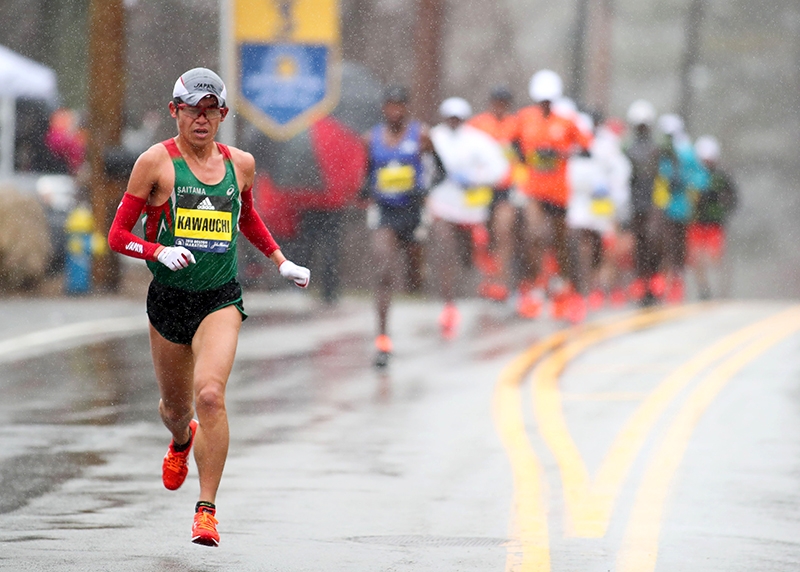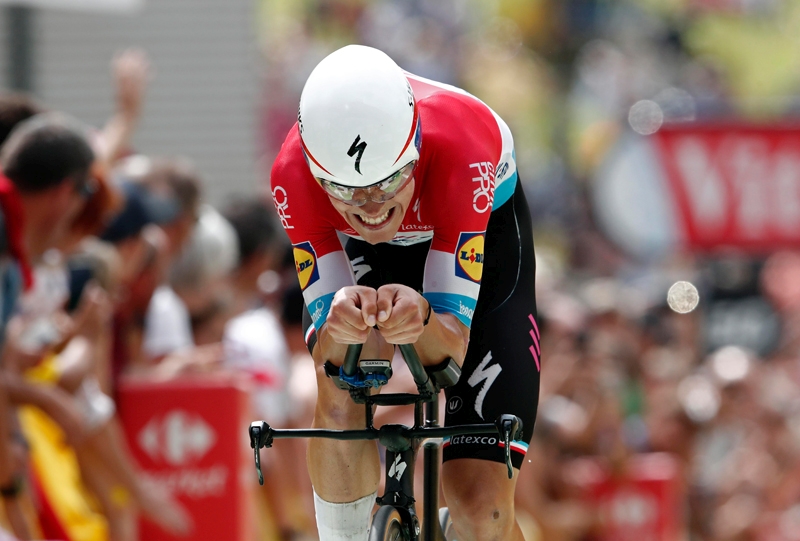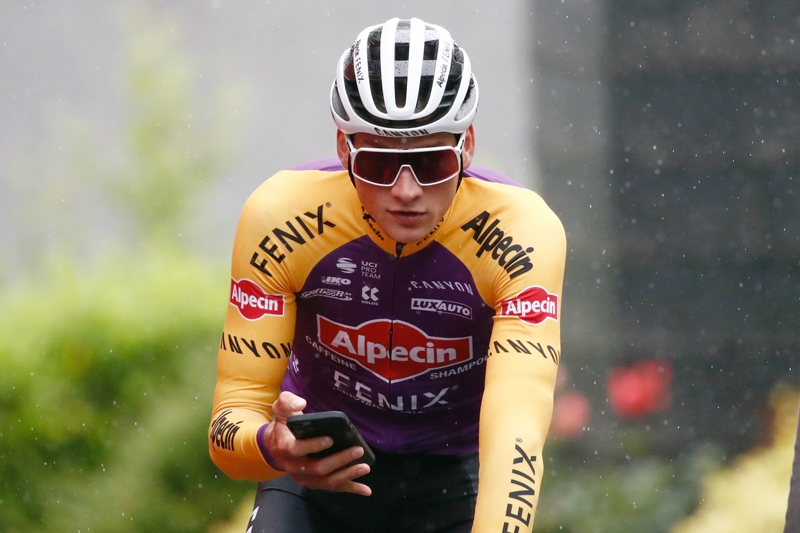You are viewing 1 of your 1 free articles. For unlimited access take a risk-free trial
Cycling time trial performance: what kind of feedback is best for performance?

There’s been much research about how cyclists can best pace an event for a PB. A commonly used approach in time trialling (including the cycle leg of triathlon) is to think about how you’re going to pace each ‘quarter’ of the event. It’s often recommended that you hold back on your effort a little bit for the first quarter in order to ‘find your cycling legs’ and build a foundation for the next three quarters. The second quarter is one where you increase your speed somewhat to hit your desired pace while in the third quarter, the goal is to try and dig in mentally to try and maintain that pace. In the final quarter, the end is in sight so the goal here is to gradually increase your effort further (if you can) as you approach the finish line. But while there’s merit in this approach, recent research by British scientists suggests that for more experienced cyclists, using the distance covered as a metric with which to judge your pace may not be the most effective approach.
Novices vs. experienced cyclists
The goal of this study was to directly compare information acquisition behaviour of experienced and novice cyclists during a self-paced 10-mile (16.1 km) time-trial, using sophisticated eye-tracking technology [Med Sci Sports Exerc. 2017 Sep;49(9):1884-1898]. This enabled the scientists to see what information the cyclists were glancing at during the time trial, and how often. To do this, ten novice and ten experienced cyclists performed a 10-mile self-paced time-trial on two separate occasions, during which a number of feedback variables (speed, distance, power output, cadence, heart rate, and time) were projected within their view. A large rate of perceived exertion scale was also presented next to the projected information and participants. Importantly, all the cyclists were fitted with a head-mounted eye tracker so the researchers could see what piece of information the cyclists were focusing on each time they glanced at the display.The findings
It was no surprise to find that the experienced cyclists performed both time-trials quicker than novices. What was interesting however was the difference in the patterns of feedback that the cyclists chose to look at. Nine out of ten of the experienced cyclists primarily looked at their speed during each glance. In contrast, the primary choice of information for the novice cyclists was the distance covered. Also different was that the experienced cyclists looked at their primary info (speed) for longer. The novice cyclists on the other hand glanced only briefly at their primary choice (distance). Another finding was that once into the last 4kms, the experienced cyclists looked at the display much less frequently whereas the novice cyclists maintained their glancing frequency.Finally, the most common combination of primary and secondary information looked at by experienced cyclists was speed and distance respectively; however, the novice cyclists were less consistent, looking at a wide variety of information combinations. Overall, the researchers concluded: ”Novice cyclists have a greater dependence upon distance feedback, which they look at for shorter and more frequent periods of time than the experienced cyclists. Experienced cyclists are more selective and consistent in attention to feedback during time-trial cycling.”
What does this mean for cyclists?
What do these findings mean? On a simple level, we might conclude that the novice cyclists were less experienced at pacing their effort, so preferred to check distance remaining to ensure they didn’t overstretch themselves and ‘blow up’ before the end of the trial. But on a deeper level, these results suggest that the experienced cyclists were better able to focus their attention internally, and tune in to the feedback coming from within to help self-regulate their pace. Using speed as the prime means of feedback meant that they placed less emphasis on how much distance was left and were more focussed on how they were performing at that time, adjusting pace accordingly. This makes sense because research shows that endurance athletes with superior attentional control and self regulation are more likely to perform more consistently and to their full potentialFront Physiol. 2016 Apr 27;7:159. doi: 10.3389/fphys.2016.00159. eCollection 2016.PRACTICAL SUGGESTIONS
- If you’re new to time trialling, try some practice runs over the distance first to get an idea of your approximate average speed. You can then use this speed as a guide to help adjust your pace during the event.
- Don’t try and switch off during a time trial or just ‘get it over with’. Pay close attention to how you feel (and maintaining a smooth and efficient position on the bike). Gauging your effort level using perceived exertion is an excellent way to judge whether you need to back off or can press on a bit.
- On hilly or windy courses, stay focussed, but concentrate less on your speed (which will vary much more than in calm flat conditions) and more on your perceived effort level.
- Don’t ignore distance covered completely; once you get to the final kilometre or so, you can crank up your pace in the knowledge that it won’t catch up with you until you’re over the finish line!
Newsletter Sign Up
Testimonials
Dr. Alexandra Fandetti-Robin, Back & Body Chiropractic
Elspeth Cowell MSCh DpodM SRCh HCPC reg
William Hunter, Nuffield Health
Newsletter Sign Up
Coaches Testimonials
Dr. Alexandra Fandetti-Robin, Back & Body Chiropractic
Elspeth Cowell MSCh DpodM SRCh HCPC reg
William Hunter, Nuffield Health
Keep up with latest sports science research and apply it to maximize performance
Today you have the chance to join a group of athletes, and sports coaches/trainers who all have something special in common...
They use the latest research to improve performance for themselves and their clients - both athletes and sports teams - with help from global specialists in the fields of sports science, sports medicine and sports psychology.
They do this by reading Sports Performance Bulletin, an easy-to-digest but serious-minded journal dedicated to high performance sports. SPB offers a wealth of information and insight into the latest research, in an easily-accessible and understood format, along with a wealth of practical recommendations.
*includes 3 coaching manuals
Get Inspired
All the latest techniques and approaches
Sports Performance Bulletin helps dedicated endurance athletes improve their performance. Sense-checking the latest sports science research, and sourcing evidence and case studies to support findings, Sports Performance Bulletin turns proven insights into easily digestible practical advice. Supporting athletes, coaches and professionals who wish to ensure their guidance and programmes are kept right up to date and based on credible science.













